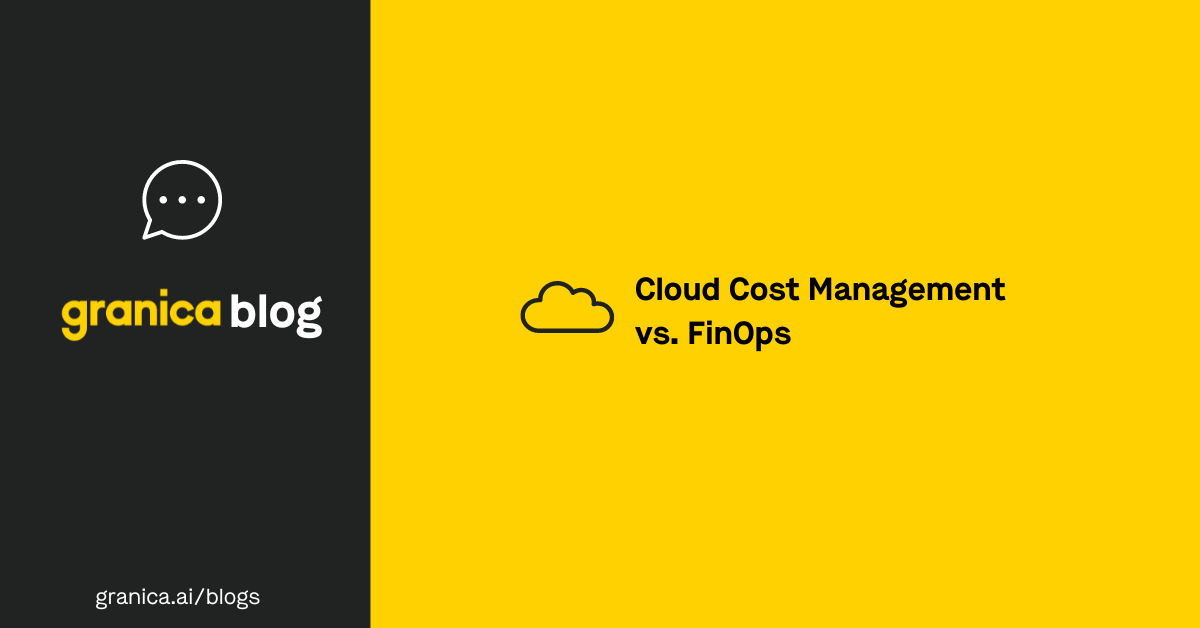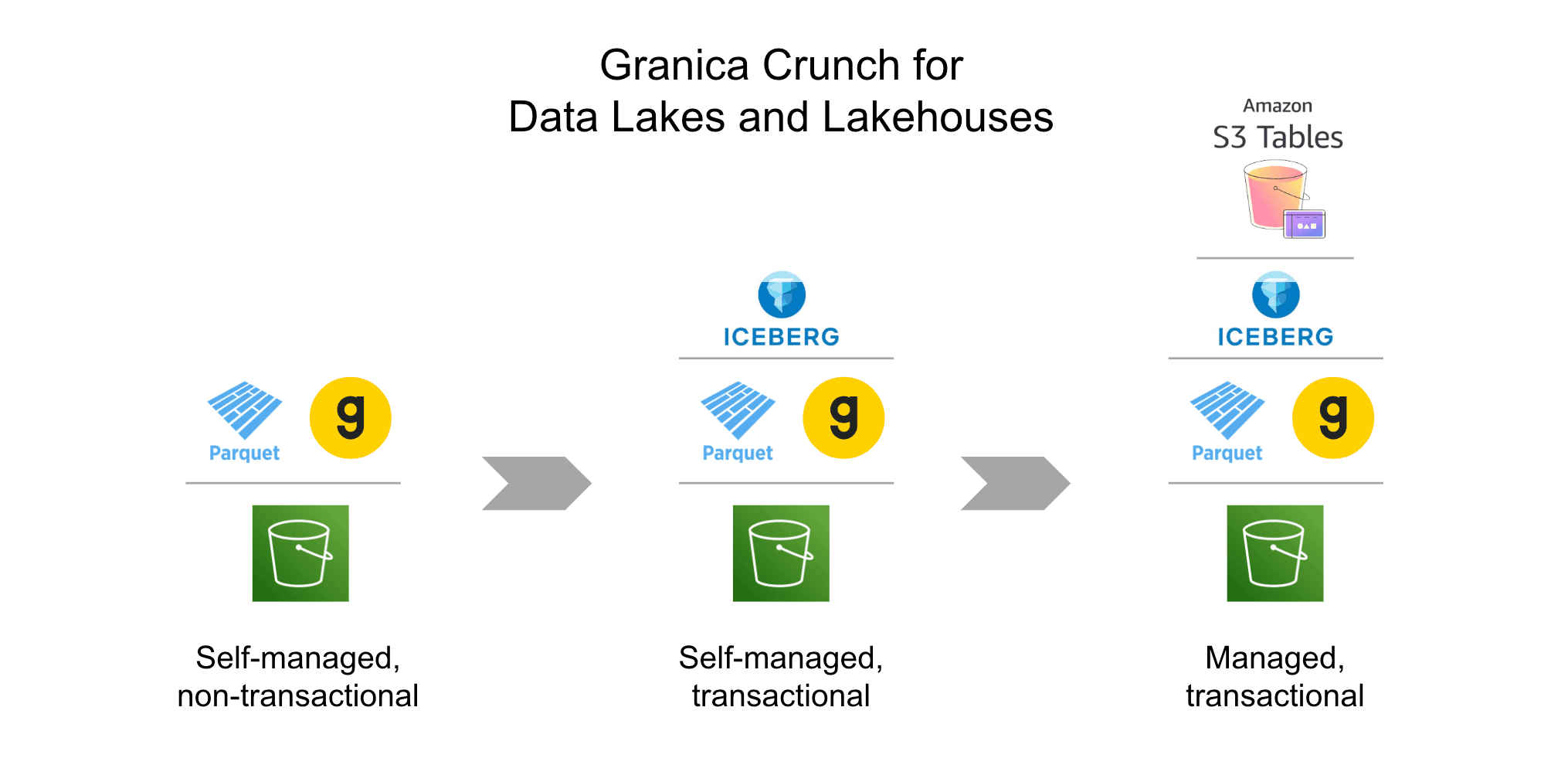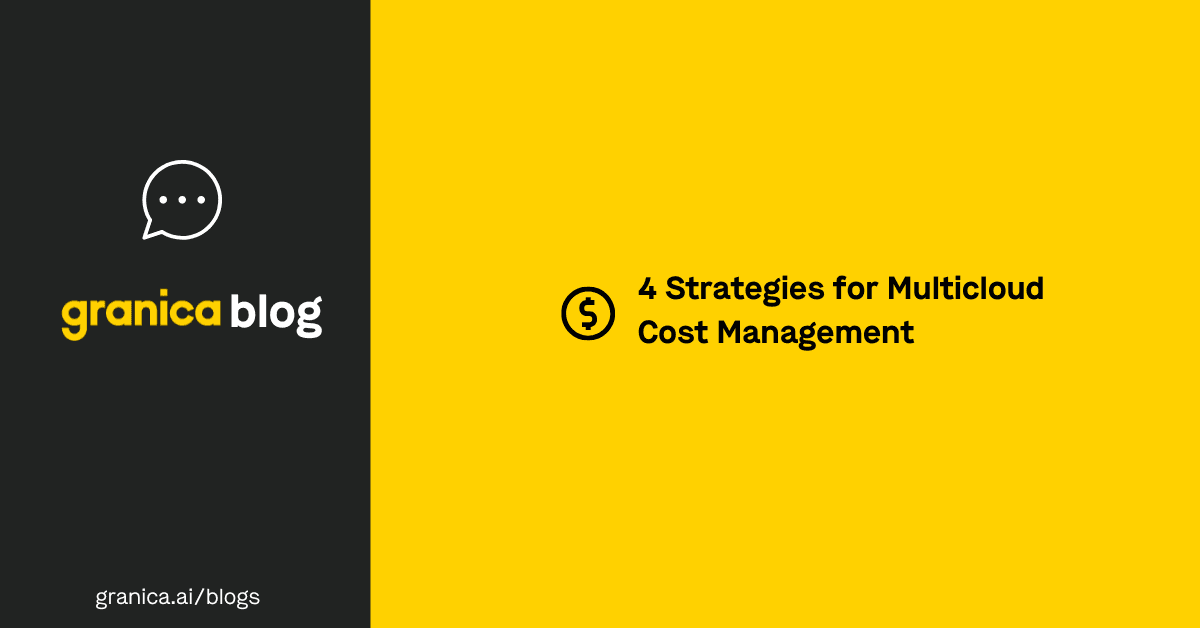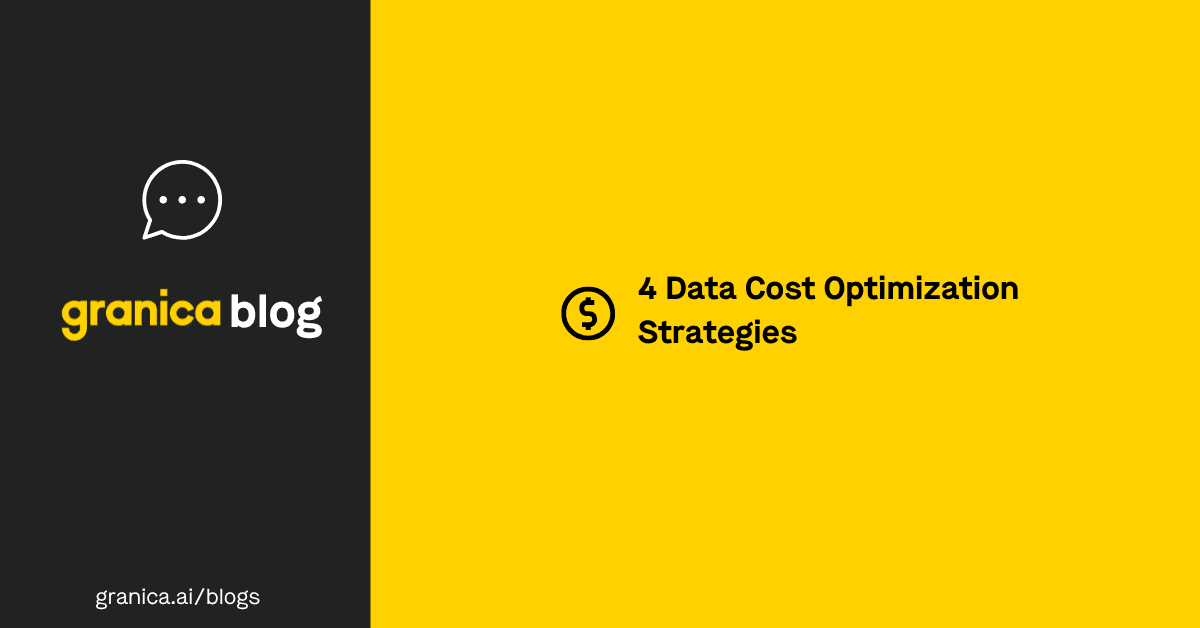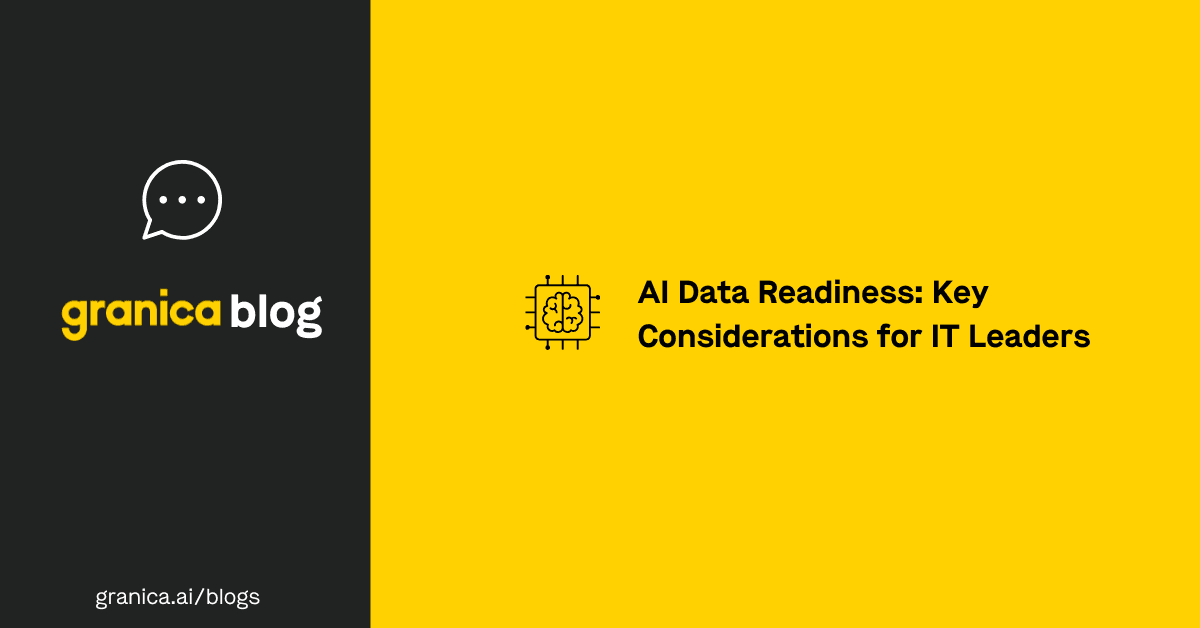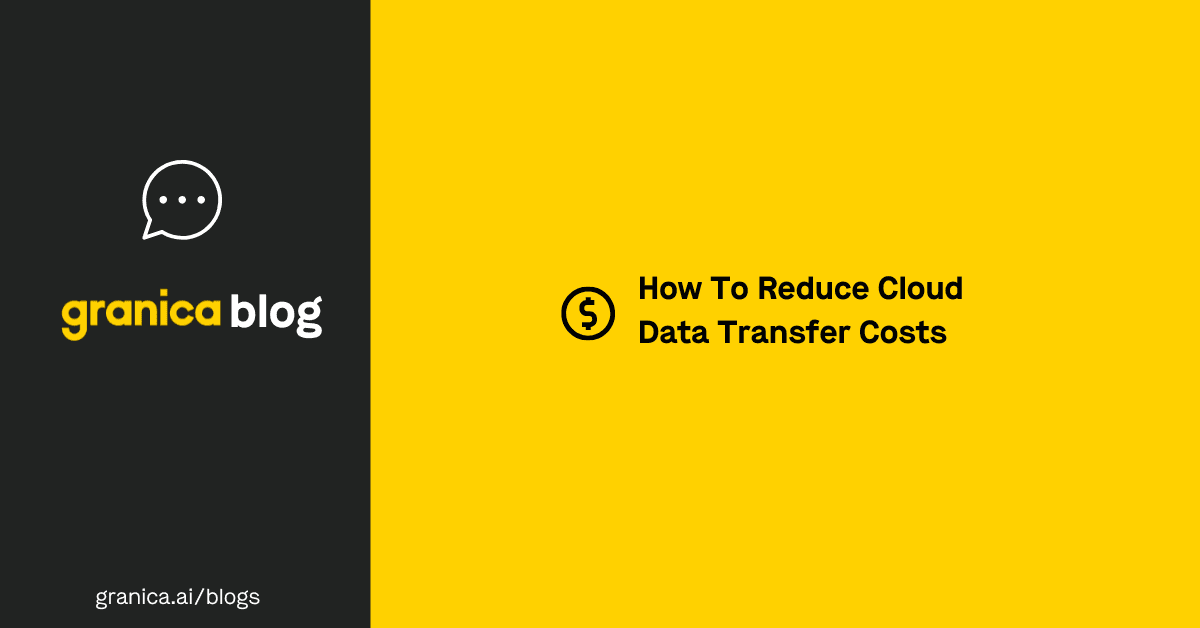Many believe cloud cost management (CCM) and FinOps are the same thing — but they’re not. There are some major differences between cloud cost management vs. FinOps, and it’s vital that organizations understand them. CCM is a critical foundation of cost-saving practices that organizations use to reduce cloud spend. FinOps then builds on this CCM foundation, analyzing cloud costs and how they impact every department in much greater depth.
If organizations mistakenly believe CCM and FinOps are equal, they risk missing out on the important optimization opportunities that FinOps offers. This is why organizations should consider more than just cloud cost management, and employ a strong FinOps strategy as well.
What is cloud cost management?
Cloud cost management is a cost-focused optimization strategy that reduces total cloud spend. CCM deals with hard numbers that answer questions like:
- “What is the company’s total cloud spend per month?”
- “How much does each resource and instance cost to maintain?”
- “How much money could the company save by taking advantage of reserved instance discounts?”
FinOps, on the other hand, is a more holistic process that deals with both hard numbers and subjective business metrics.
What is FinOps?
FinOps doesn’t just reduce cloud spend — it extracts the maximum potential from every dollar spent. FinOps is a process that requires every stakeholder in a company to analyze costs across the organization and ensure these costs align with specific business goals.
Cloud cost management informs many aspects of FinOps. For example, any good FinOps strategy requires businesses to track cloud data lake storage costs. The difference is that FinOps also considers qualitative factors beyond the total cost, like how the organization uses each resource; whether those resources contribute to measurable business agility and outcomes; and which teams need to collaborate with each other to keep cloud costs as low as possible.
To fully understand the specifics of cloud cost management vs. FinOps, stakeholders should be aware of four key differences, which we discuss in greater detail below.
Comparing cloud cost management vs. FinOps
Cloud cost management differs from FinOps in its main goals, scope, essential teams, and key performance indicators (KPIs):
| Cloud Cost Management vs. FinOps | |
|---|---|
| Cloud Cost Management | FinOps |
| Main Goal | |
| Reduce overall cloud spend. | Optimize cloud spend to achieve specific business goals. |
| Scope | |
| Focuses primarily on cloud resource management. | Uses holistic methods to optimize business operations across the organization. |
| Team | |
| One or more IT staff that understand cloud resource management. | All stakeholders within the organization, including engineers, finance departments, and executives. |
| Key Performance Indicators (KPIs) | |
| The most important KPIs are hard numbers, such as cost per unit. | The most important KPIs are both hard numbers and subjective metrics, like user satisfaction. |
Main Goals
Cloud cost management focuses solely on money-saving opportunities. IT teams track cloud costs with methods like resource tagging and then find ways to reduce these costs, such as deleting unused resources.
FinOps targets a wider range of business goals that exceed cloud cost reduction. It’s concerned with how and why the business uses its cloud resources.
The goals of these practices often align. Both CCM and FinOps recommend spinning down idle compute instances to save money and eliminate compute instances that have no business value. Likewise, CCM and FinOps also encourage businesses to use lossless compression algorithms to shrink the size and associated cost of files stored in cloud data lakes.
Occasionally, however, contradictions arise between cloud cost management vs. FinOps goals. For example, a CCM strategy would recommend the least expensive cloud platform, even if it reduces product quality or performance. A FinOps strategy would favor using a more expensive platform, if it results in better outcomes and puts the business ahead of competitors because FinOps seeks to balance costs and performance goals.
Scope
Cloud cost management relies on cloud resource management to meet its goals. To perform CCM, businesses typically:
- Track costs using resource tags and cost visualization tools.
- Delete or reallocate unused or underutilized resources.
- Compress the size of useful data stored in cloud data lakes.
- Use multiple Availability Zones (AZs) architecture to reduce egress and transfer costs.
- Tier data to keep less useful data in lower-cost storage locations.
- Identify discount opportunities, such as reserved instance discounts.
This list isn’t comprehensive; these are just some of the most common cloud resource management strategies.
FinOps expands CCM’s scope with additional qualitative metrics to analyze the overall value of an organization’s cloud costs. In addition to cloud resource management, FinOps practitioners work closely with IT teams, executives, and other stakeholders to understand:
- How the business uses each resource.
- Which resources support current strategic goals.
- Which additional resources the business needs to meet future goals.
- Whether teams know which resources are allocated to them, and how to utilize them effectively.
- How to reduce costs without sacrificing user satisfaction or disrupting workflows.
- Which resources could be better utilized to improve business agility.
- How to automate data governance, budgets, and forecasts to make business operations more efficient and reliable.
Team
Cloud cost management places the bulk of responsibility on IT teams. This is one of the downsides of cloud cost management vs. FinOps. Companies that rely solely on CCM may find their teams don’t often communicate with other departments, which leads to inefficiencies and greater cloud costs.
For example, IT teams may hesitate to utilize cloud resources because they don’t have a complete view of the cloud budget or the organization’s operational goals. A lack of perspective may prompt a default choice to use as few resources as possible to keep costs down.
FinOps is far more collaborative than CCM because it involves every stakeholder in the organization, including IT teams, finance, and executives. All teams understand their own departmental scope and the specific resources allocated to them. Organization-wide collaboration improves resource utilization rates and increases operational efficiencies.
KPIs
Cloud cost management KPIs are often simple to track because they are hard numbers. Essential CCM KPIs include:
- Total cloud spend.
- Individual service costs (like compute or storage).
- Cost per resource and instance.
- Cost per team or department.
- Utilization rates by resource.
- Actual cloud costs vs. budgeted costs.
FinOps KPIs are slightly harder to track, because they combine hard numbers with subjectively weighted metrics. Some FinOps-specific KPIs include:
- Usage patterns (both historical and forecast).
- Monthly and annual revenue.
- Return on investment (ROI) for individual services and resources.
- Net savings potential.
- Cost optimization ratio (optimized cloud costs divided by pre-optimized cloud costs).
- User satisfaction rates.
- Training or certification completion rates for teams.
- End user behavior patterns.
- Cost visibility delay (the time it takes to ingest and display cost data to stakeholders).
Hitting these KPIs, particularly in the context of highly strategic AI initiatives, requires effective cloud cost optimization tools like the Granica training data platform.
How Granica supports FinOps
Granica helps businesses uncover their potential savings using best-in-class FinOps tools, including Granica Crunch and Granica Chronicle AI.
Granica Crunch is a data cost optimization service that uses lossless compression algorithms to reduce the size of large-scale data sets, especially AI training data sets, by up to 80%. This improves data efficiency and can dramatically reduce the cost of maintaining data stored in cloud data lakes. Compression can also reduce the cost of intra-cloud and inter-cloud transfer rates. Granica Crunch’s machine-learning-based compression algorithms dynamically adapt to each file based on its unique content and structure, maximizing savings automatically and freeing up IT teams to focus on additional FinOps efforts.
Granica Chronicle AI is a training data visibility service that provides a full picture of an organization's data lake files, growth, and access patterns. In FinOps, it’s vital that teams have a detailed view of which data sources are driving their cloud costs, and Chronicle AI supports these efforts with genAI-based visualization tools. Users can ask questions using natural language, and Chronicle AI responds with actionable insights, including graphs and tables. This user-friendly interface makes it easy to collaborate with teams across the organization without requiring dashboards, SQL, or CLI.
These tools make Granica a valuable partner in any FinOps strategy.
Explore an interactive demo for Crunch to optimize your cloud spend and achieve your FinOps goals.
